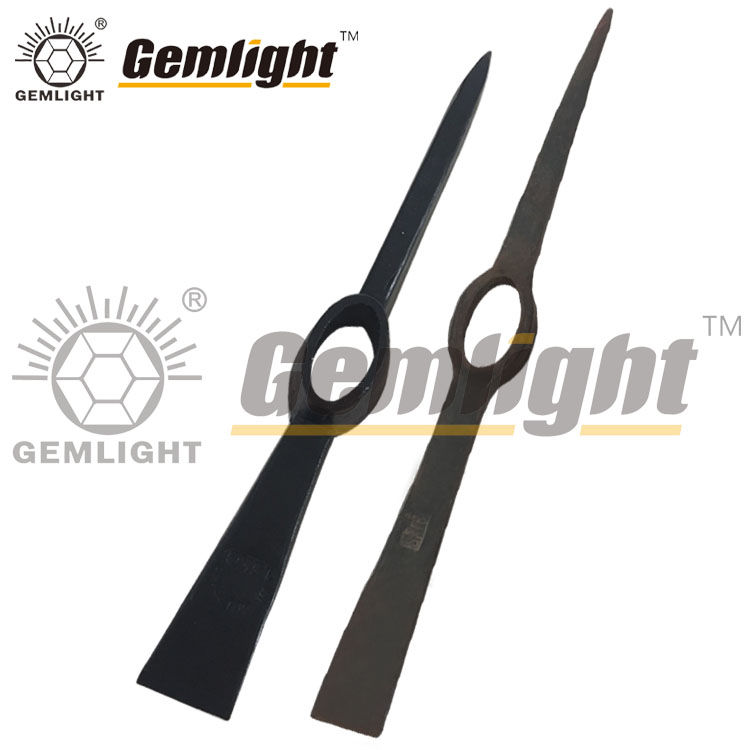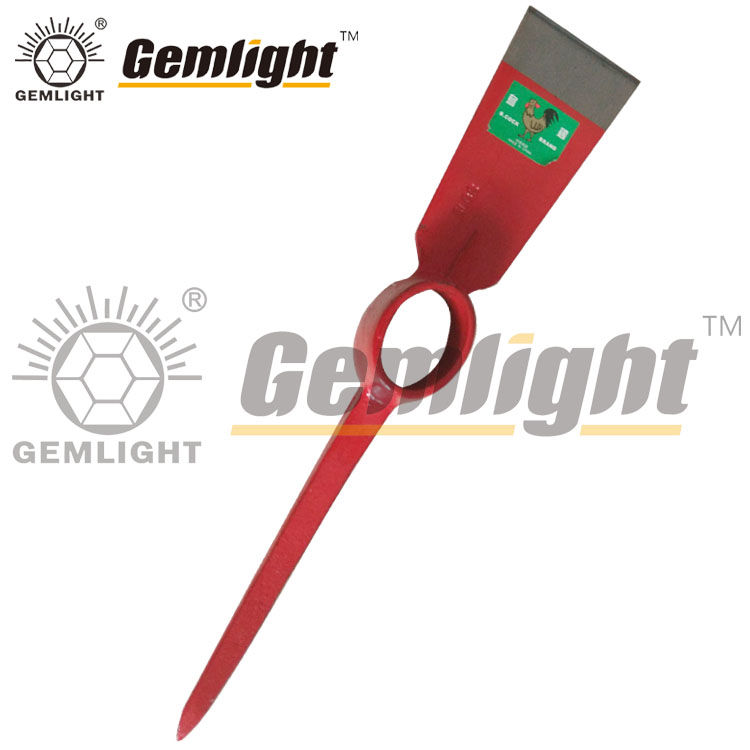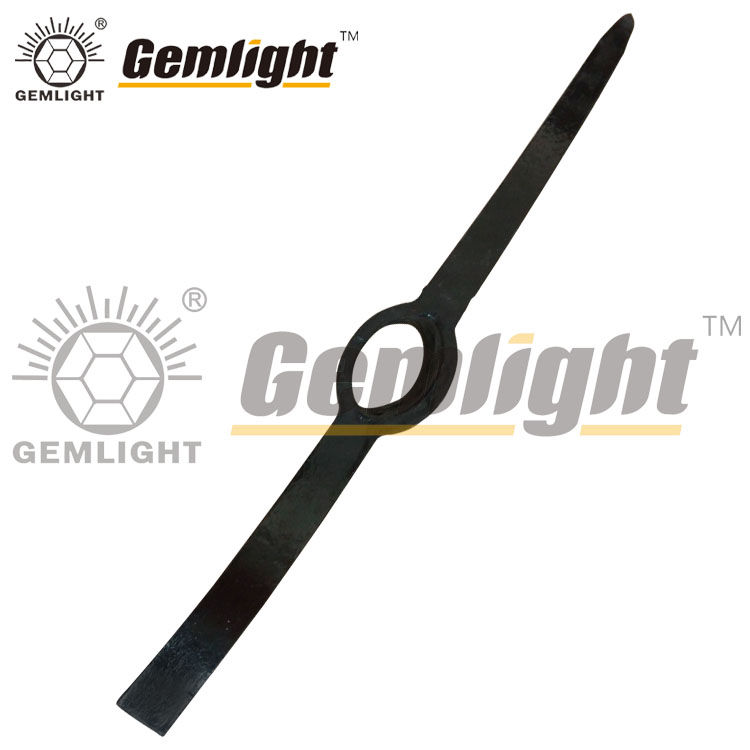News
The garden pickaxe is more than just a simple tool—within African agricultural and landscaping contexts, it plays a critical role in soil preparation, land clearing, and day-to-day farming tasks. Due to the diversity of soil conditions across the African continent—ranging from hard-packed clay in parts of West Africa to rocky and dry soils in East Africa—the garden pickaxe has proven to be an indispensable tool for both beginners and experienced field workers.
Unlike a traditional hoe or shovel, the garden pickaxe is specifically engineered to penetrate tough surfaces. Its pointed end is ideal for breaking hard ground, while the flat chisel-like side helps with clearing roots and rocks. This dual-purpose design makes it an all-in-one solution for tasks like trenching, planting preparation, or even clearing compacted gravel.
In rural areas where mechanized tools are not always practical or affordable, the garden pickaxe remains a trusted manual alternative. Its effectiveness, durability, and adaptability make it an essential part of both subsistence and commercial farming setups.
For first-time users, especially those entering farming as a new profession or urban gardeners turning to home cultivation, a garden pickaxe offers the right balance between cost and utility. With minimal training, users can quickly become efficient in breaking soil, making it a perfect introductory tool for agricultural tasks.
Choosing a garden pickaxe designed for African soil types can significantly improve productivity and reduce labor fatigue. This tool isn’t just a piece of steel and wood—it’s a practical investment for reliable land management.

Selecting the proper gardening pickaxe can make a notable difference in your work efficiency and safety, especially in varied African terrains. For users working in countries like Nigeria, Kenya, or Ghana, where soil textures can shift dramatically within a single region, it’s critical to align your tool choice with the local environment and farming goals.
Start by evaluating the pickaxe head design. If your work involves rocky or compacted soils, opt for a gardening pickaxe with a pointed tip for deeper penetration and a flat blade for leveling and root removal. This dual-head format is the most popular for general use and is versatile across most soil types.
Handle material is another essential factor. Traditional wood handles remain popular due to their availability and shock-absorbing properties, but modern fiberglass handles offer improved durability and resistance to weathering—especially important in humid or rainy regions. For large-scale projects or frequent use, choose a model with an ergonomic handle that reduces hand fatigue.
Size and weight also matter. A heavier gardening pickaxe will deliver more impact but may be tiring over long periods. Beginners should consider mid-weight options (2.5–3.5kg) with a balanced grip. Meanwhile, professionals often lean toward heavier-duty models designed for rigorous daily use.
In regions with limited access to replacement parts, it's wise to select a mining pickaxe from a manufacturer that offers spare heads and handles. Quality welding, rust-resistant coatings, and durable binding between the head and handle should not be overlooked.
By matching your gardening pickaxe to your specific soil conditions, personal strength, and daily workload, you ensure optimal productivity while minimizing wear on your body. Whether you're farming maize in Tanzania or cultivating vegetables in rural Uganda, the right pickaxe is a key contributor to success.

Owning a garden tools pickaxe is just the beginning. To ensure safe and efficient operation, and to maximize the tool’s lifespan, proper usage and maintenance practices are essential—especially under demanding African farming conditions.
When using your garden tools pickaxe, the right technique matters. Grip the handle firmly with both hands and raise the tool in a controlled arc above your shoulder. Avoid swinging wildly, as this can lead to injuries or damaged equipment. Repeated, rhythmic strikes with measured force are more effective for breaking soil or dislodging stones than brute force.
Personal safety should always be a priority. Wear closed-toe boots, gloves, and protective eyewear when handling the tool. Keep bystanders at a safe distance during operation, especially in community or family farming environments.
After each use, clean the pickaxe thoroughly. Use a wire brush or cloth to remove mud, plant debris, and moisture. For the metal head, applying a light coat of oil (like machine oil or vegetable oil) helps prevent rust—an especially important step in humid or coastal regions.
Inspect your best tools pickaxe regularly for signs of wear: cracks in the handle, loosening of the pick head, or chipping of the steel tip. A loose head can be extremely dangerous, so ensure the binding is secure before each use. If parts become damaged or worn, replace them promptly with compatible components.
Storage also matters. Avoid leaving your pickaxe exposed to rain or sun for extended periods. Hang it indoors or in a shed to prevent warping and rusting.
By treating your garden tools pickaxe as a long-term asset and following these usage and maintenance guidelines, African farmers and gardeners can enjoy years of reliable service with minimal issues.

At our factory, we understand the unique requirements of African farming communities. That’s why we offer a specialized line of garden pickaxe products designed for high durability, practical efficiency, and market affordability—direct from the source.
Our garden pickaxe models are forged with high-carbon steel, providing superior strength to handle tough soils, roots, and embedded stones. Each head undergoes heat treatment to resist chipping and deformation, even under intense daily use. Whether it’s a pointed blade for precision work or a flat chisel edge for breaking and leveling, our tools are engineered for rugged reliability.
We offer a range of handle options including solid hardwood, reinforced fiberglass, and ergonomic anti-slip designs—ideal for both novice users and seasoned farmers. All handles are pressure-fitted and mechanically bonded to ensure safe, long-term performance.
Customization is one of our core strengths. Our OEM and ODM services allow clients to tailor garden pickaxe designs based on local preferences, including length, weight, handle style, and color branding. Bulk buyers can also request laser-engraved logos and retail packaging solutions to match local market demands.
Here are a few of our best-selling models for the African market:
Standard Garden Pick axe – Lightweight, general-purpose, suited for home gardens
Heavy-Duty Farming Pickaxe – Extra-thick steel head, hardwood handle, ideal for clay and rocky soil
Multi-Functional Tools Pickaxe – Dual-sided with integrated hoe function for versatility
With years of export experience to East, West, and Southern Africa, we ensure smooth logistics, competitive pricing, and professional after-sales support. Whether you’re sourcing tools for retail distribution, NGO agricultural programs, or community farming projects, our garden pickaxe solutions provide the performance and value your clients can rely on.

 Sitemap
Sitemap